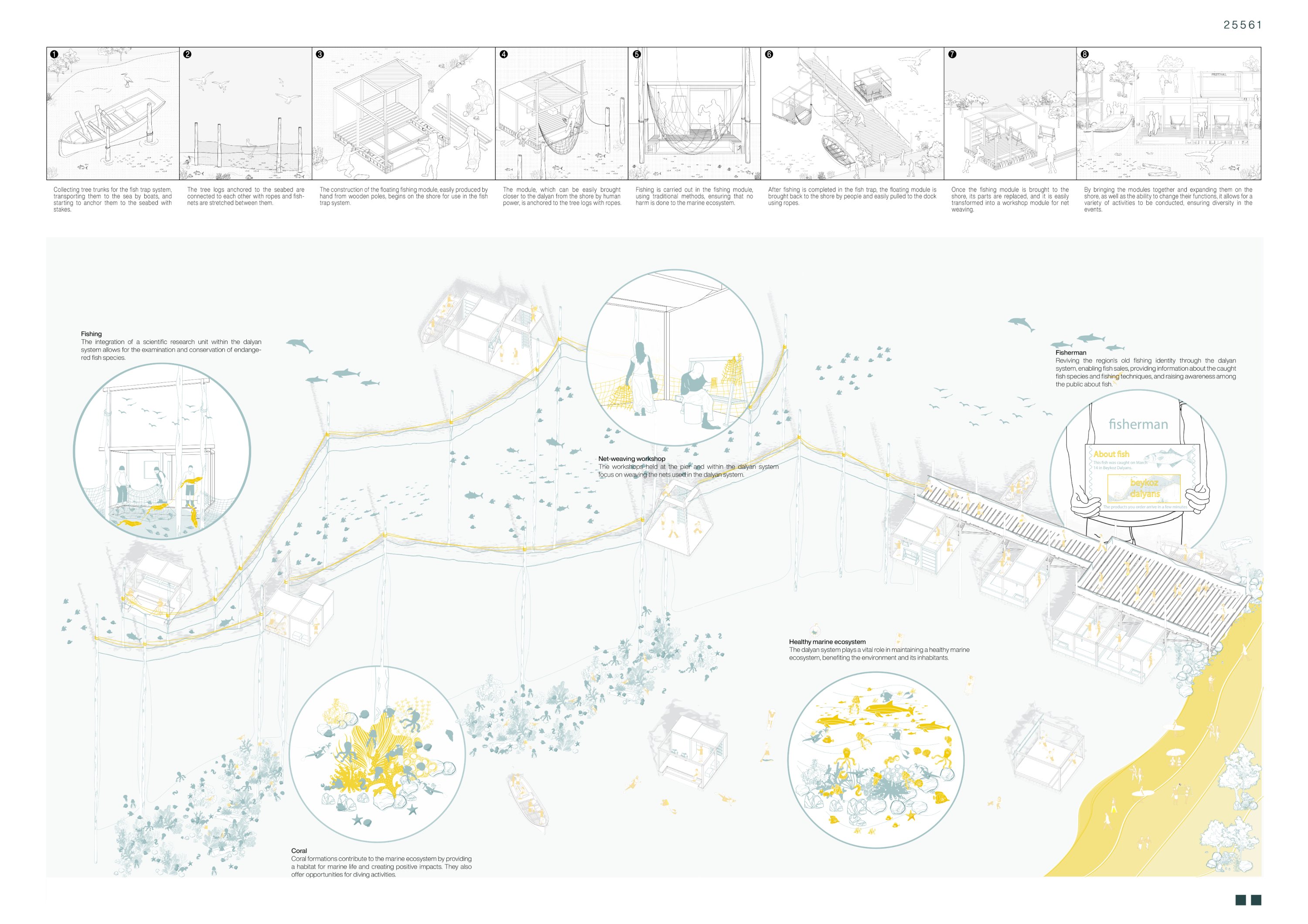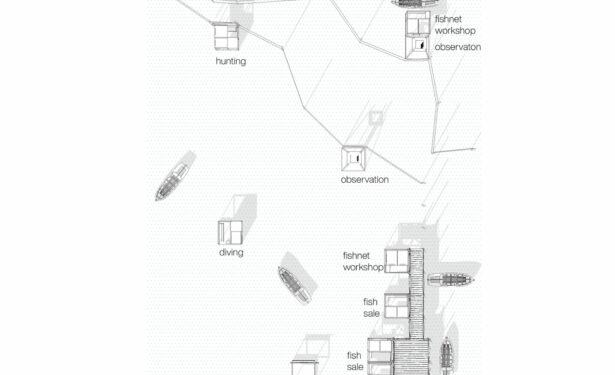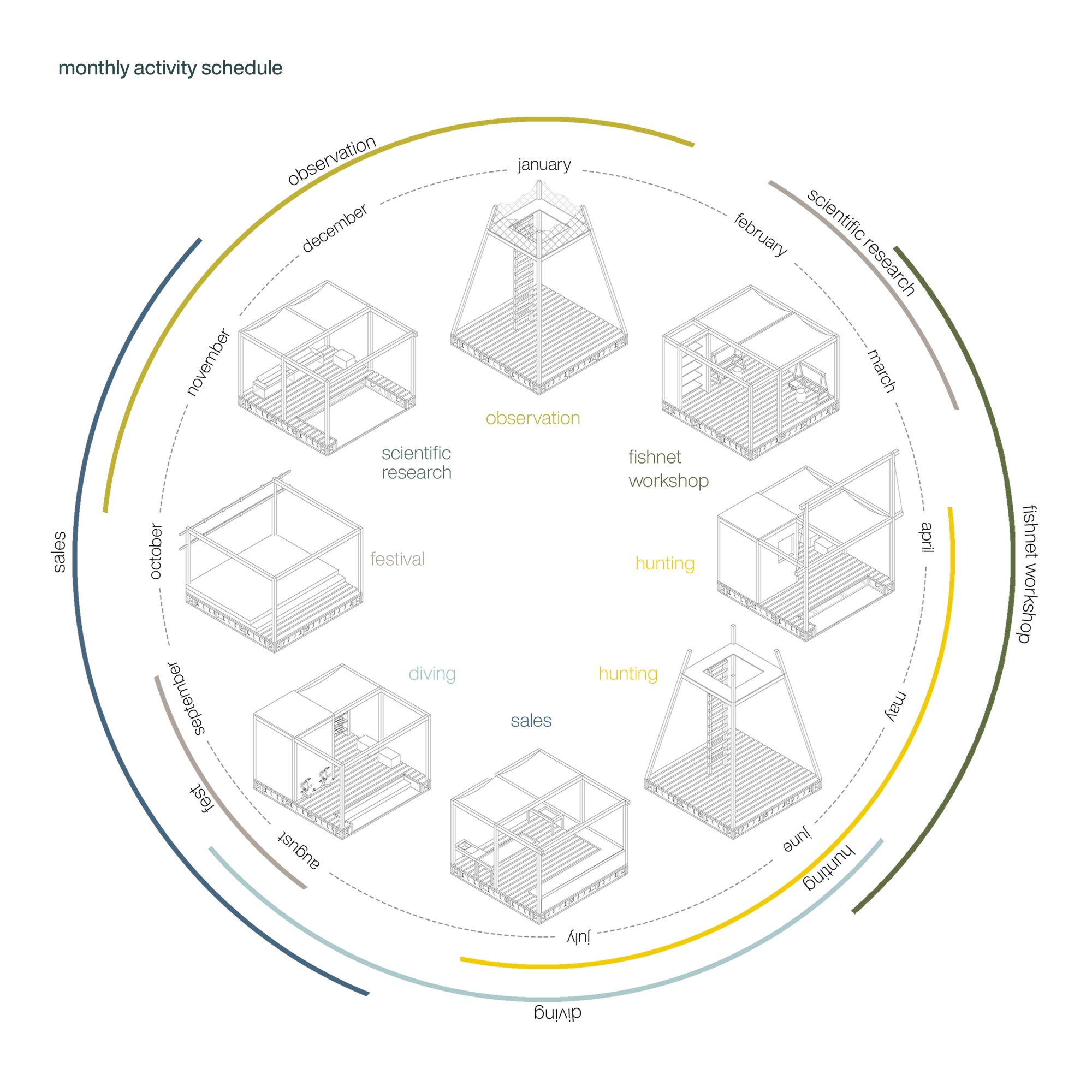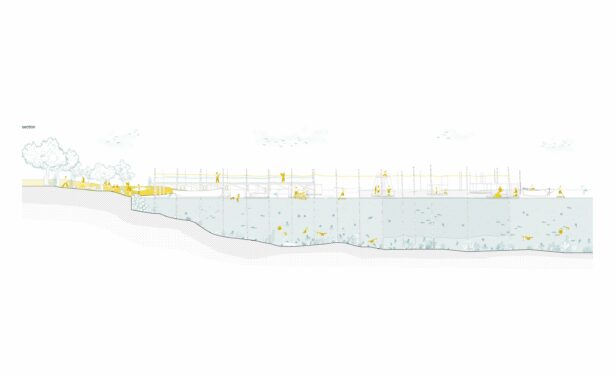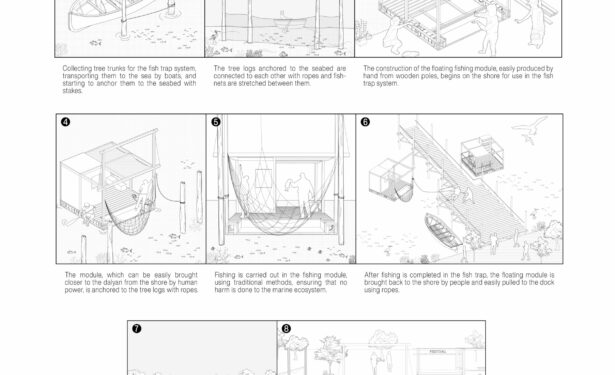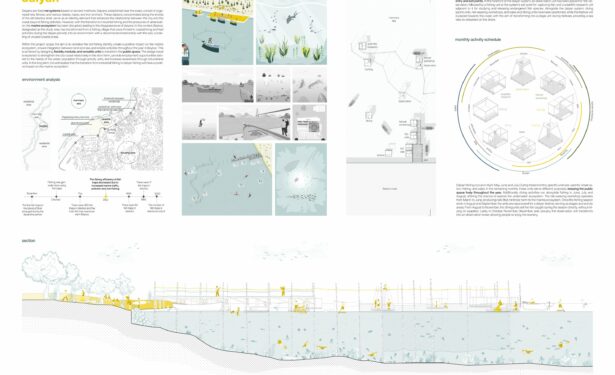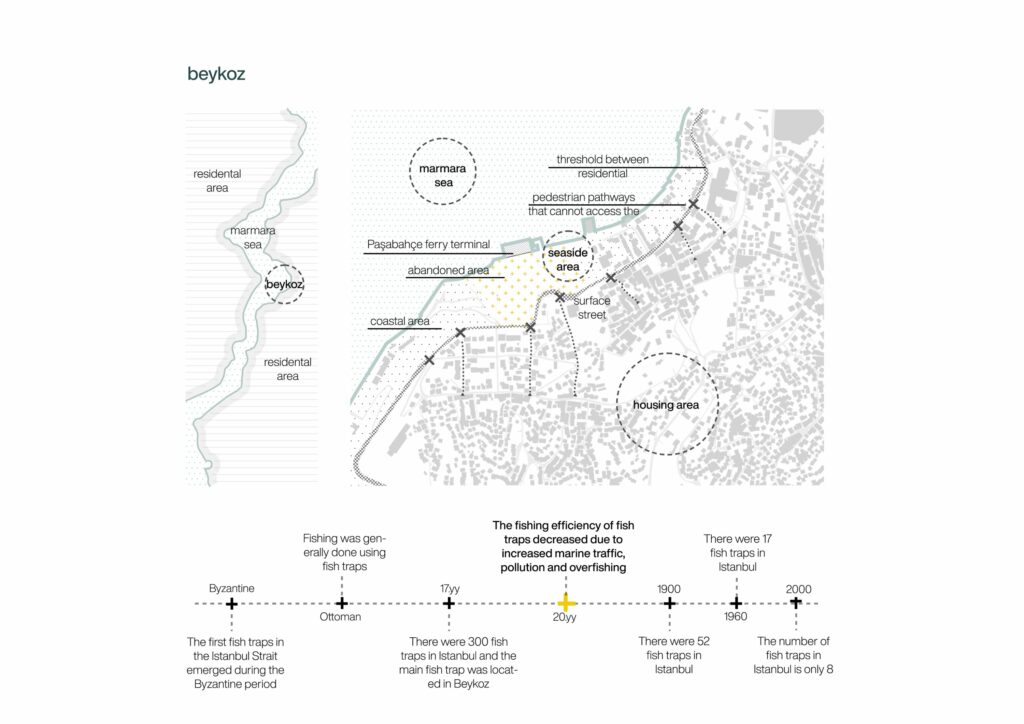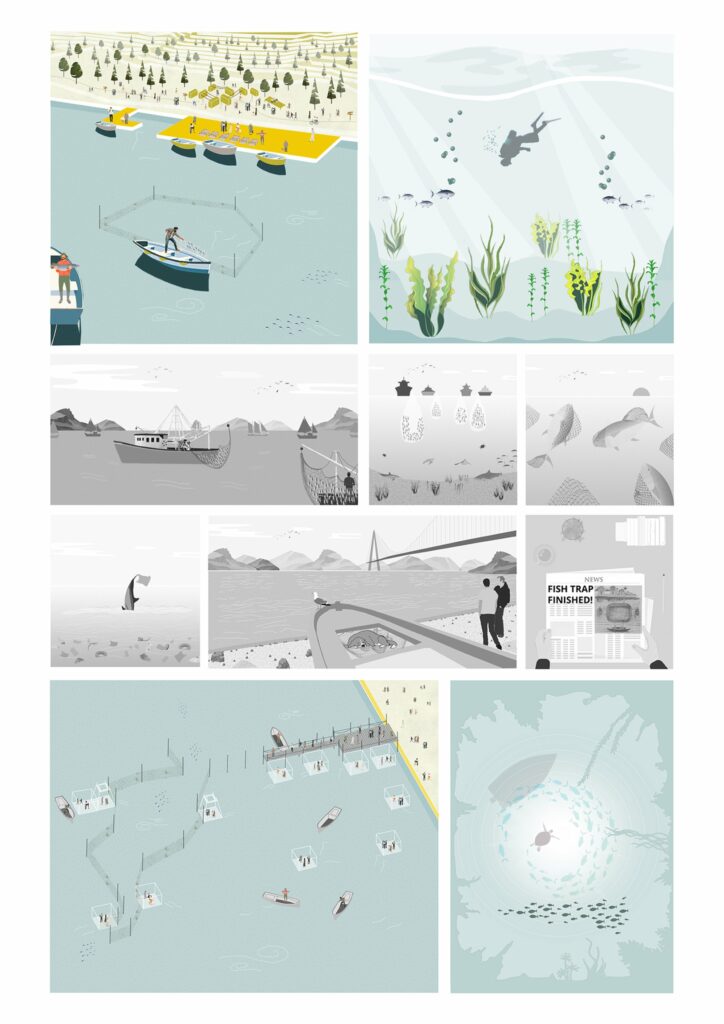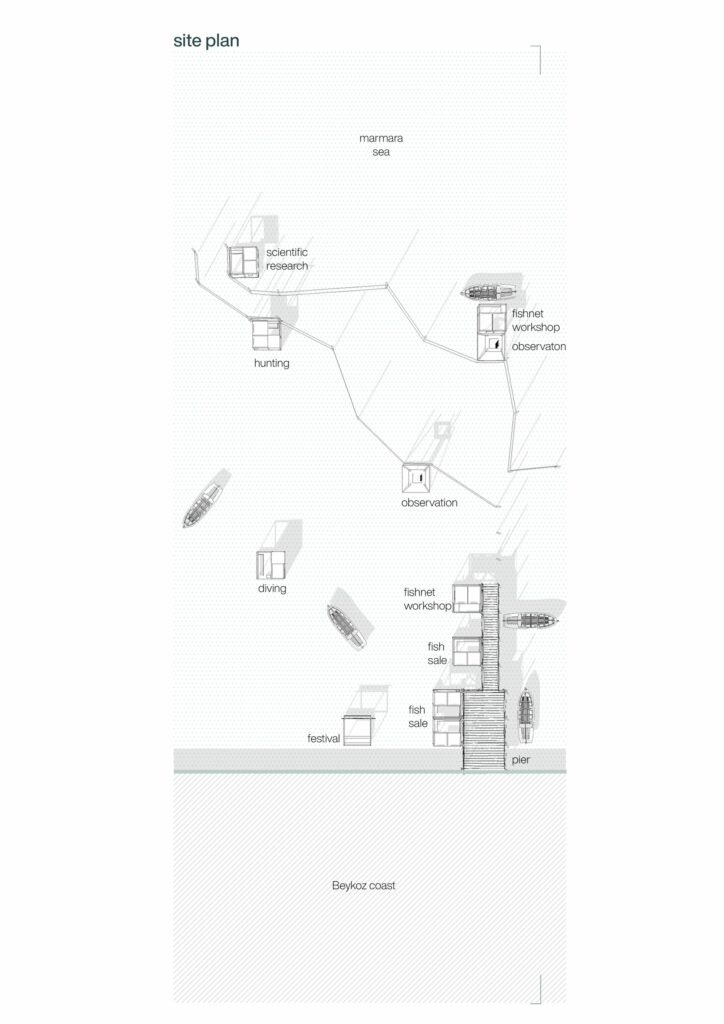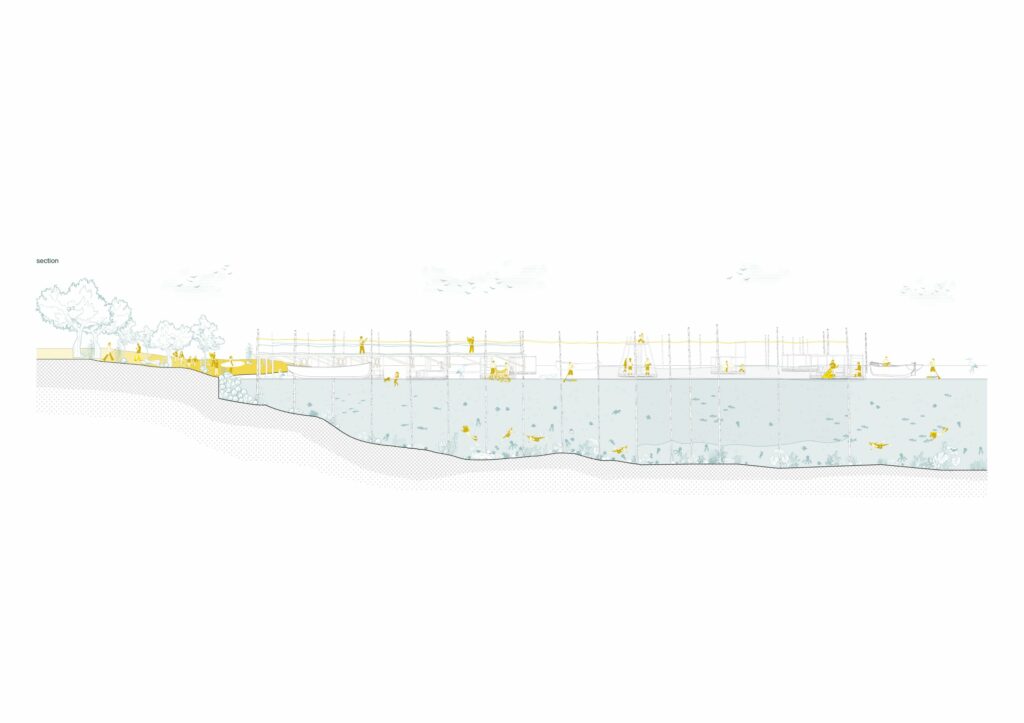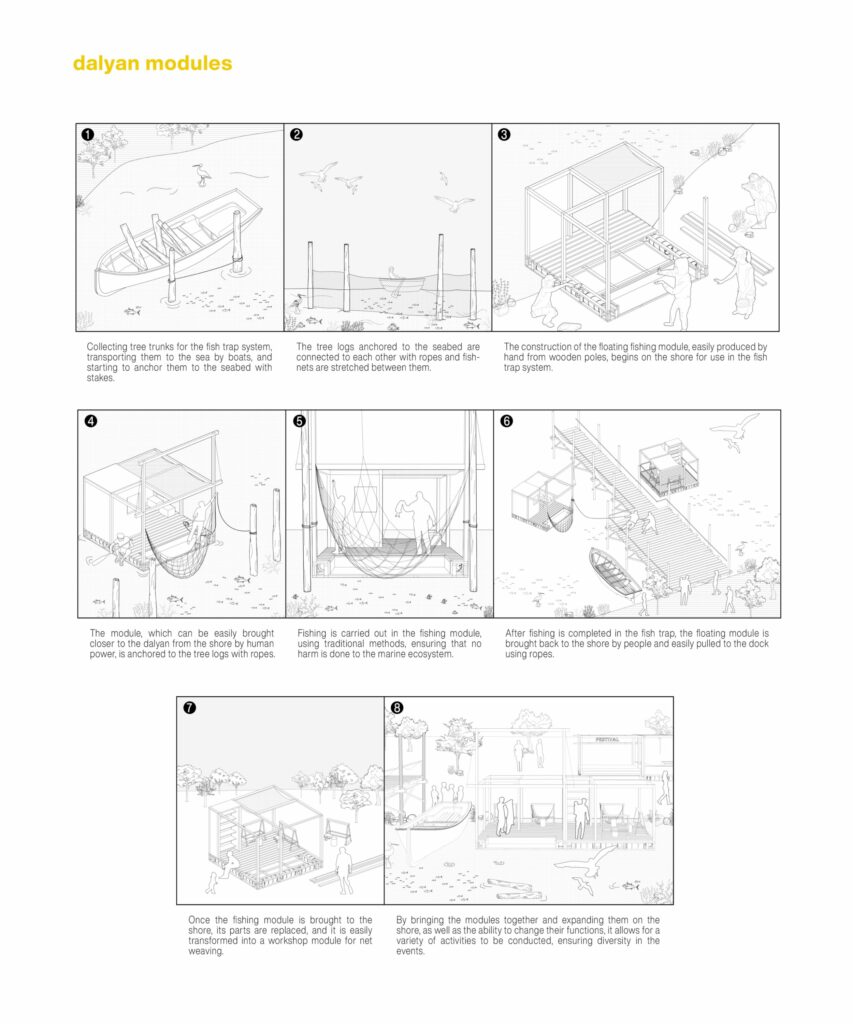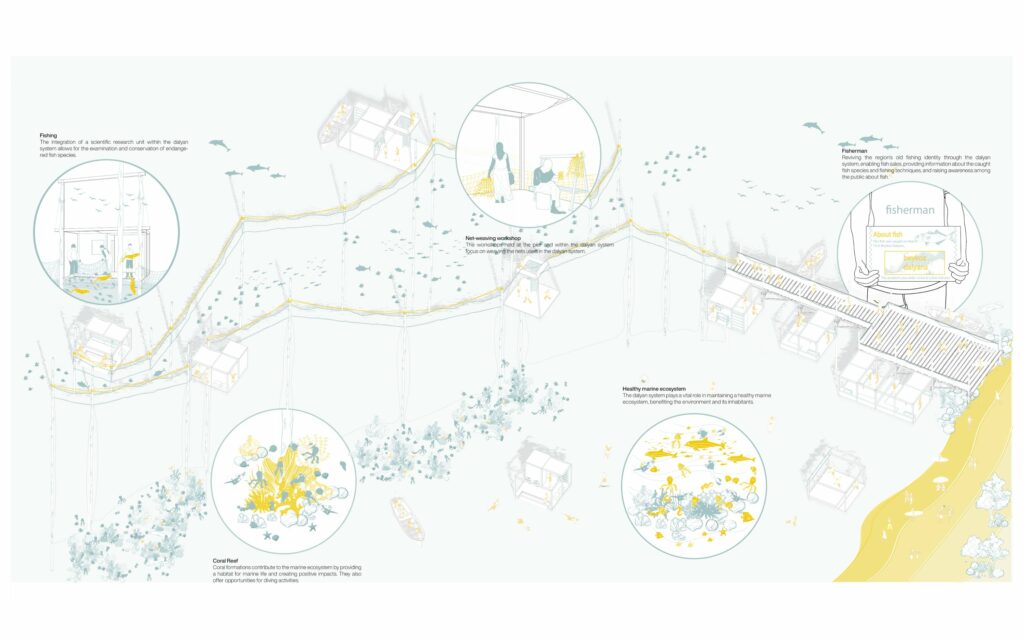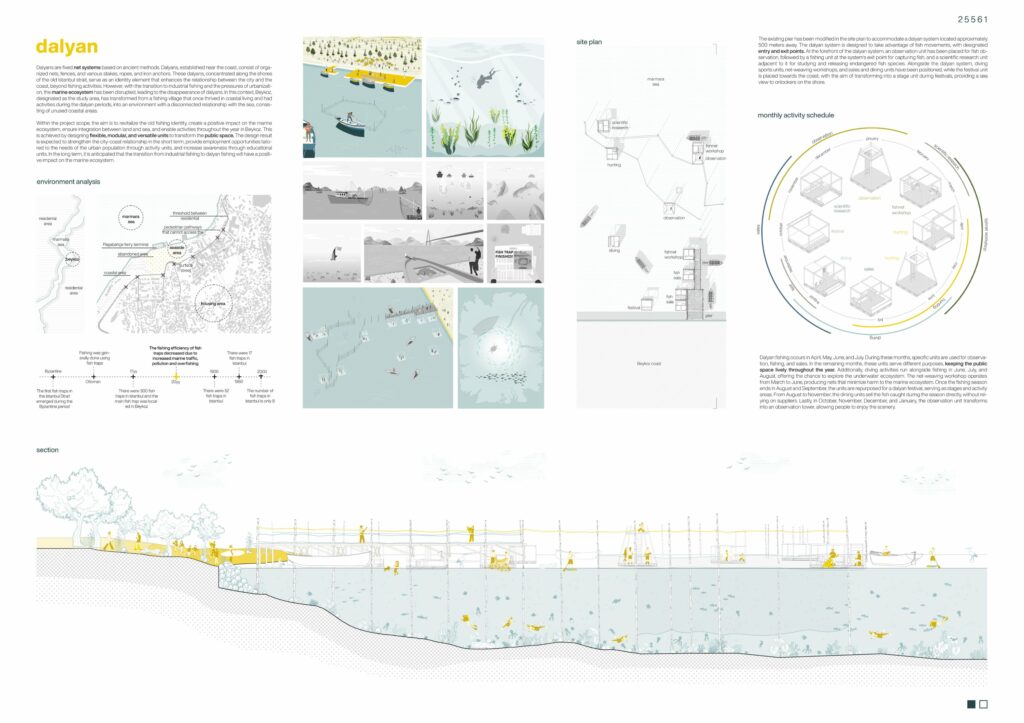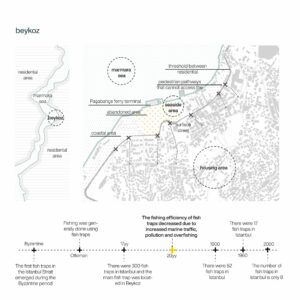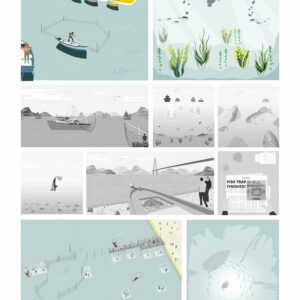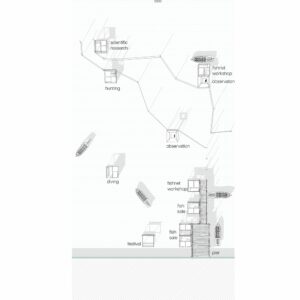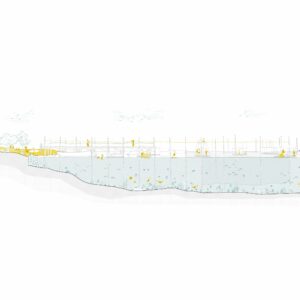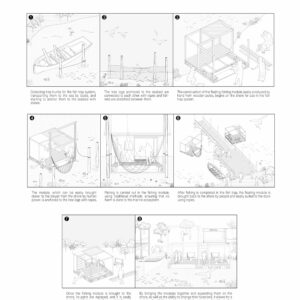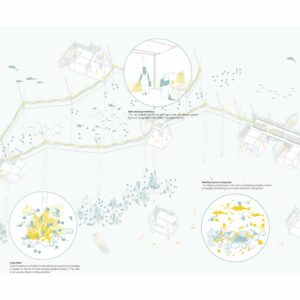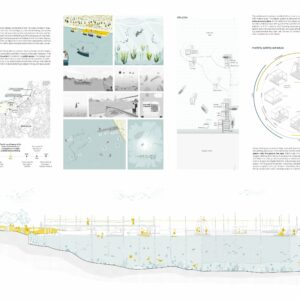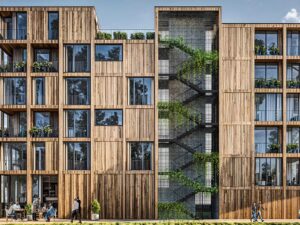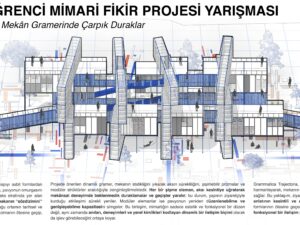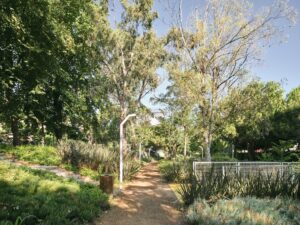- 25 Haziran 2023
- 3525 defa okundu.
Mansiyon, Tactical Urbanism Now! 2023
Ece İrem Tuncer, Ahmet Hakan Uğur, Övgü Gülaçar, Hatice Bahar Çoklar ve Ceren Geyiktepe, Tactical Urbanism Now! 2023'te mansiyon ödülü aldı.
Dalyans are fixed net systems based on ancient methods. Dalyans, established near the coast, consist of organized nets, fences, and various stakes, ropes, and iron anchors. These dalyans, concentrated along the shores of the old Istanbul strait, serve as an identity element that enhances the relationship between the city and the coast, beyond fishing activities. However, with the transition to industrial fishing and the pressures of urbanization, the marine ecosystem has been disrupted, leading to the disappearance of dalyans. In this context, Beykoz, designated as the study area, has transformed from a fishing village that once thrived in coastal living and had activities during the dalyan periods, into an environment with a disconnected relationship with the sea, consisting of unused coastal areas.
Within the project scope, the aim is to revitalize the old fishing identity, create a positive impact on the marine ecosystem, ensure integration between land and sea, and enable activities throughout the year in Beykoz. This is achieved by designing flexible, modular, and versatile units to transform the public space. The design result is expected to strengthen the city-coast relationship in the short term, provide employment opportunities tailored to the needs of the urban population through activity units, and increase awareness through educational units. In the long term, it is anticipated that the transition from industrial fishing to dalyan fishing will have a positive impact on the marine ecosystem.
The existing pier has been modified in the site plan to accommodate a dalyan system located approximately 500 meters away. The dalyan system is designed to take advantage of fish movements, with designated entry and exit points. At the forefront of the dalyan system, an observation unit has been placed for fish observation, followed by a fishing unit at the system’s exit point for capturing fish, and a scientific research unit adjacent to it for studying and releasing endangered fish species. Alongside the dalyan system, diving sports units, net-weaving workshops, and sales and dining units have been positioned, while the festival unit is placed towards the coast, with the aim of transforming into a stage unit during festivals, providing a sea view to onlookers on the shore.
Dalyan fishing occurs in April, May, June, and July. During these months, specific units are used for observation, fishing, and sales. In the remaining months, these units serve different purposes, keeping the public space lively throughout the year. Additionally, diving activities run alongside fishing in June, July, and August, offering the chance to explore the underwater ecosystem. The net-weaving workshop operates from March to June, producing nets that minimize harm to the marine ecosystem. Once the fishing season ends in August and September, the units are repurposed for a dalyan festival, serving as stages and activity areas. From August to November, the dining units sell the fish caught during the season directly, without relying on suppliers. Lastly, in October, November, December, and January, the observation unit transforms into an observation tower, allowing people to enjoy the scenery.
